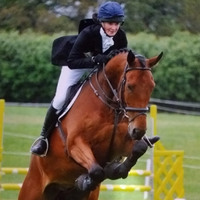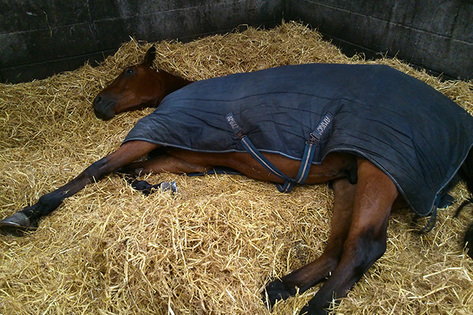
Are You & Your Horse Ready For Bitting Advice? The Steps You Need To Consider First
Equestrian Advice & Guides All Disciplines
Build your business profile for FREE and expose your services to thousands of potential clients!
Create my profile now!
A clumsy horse, an A&E visit and a global pandemic
So we’ve all heard the saying that bad luck comes in threes. When my 17hh horse Jack – crazed through lack of turnout – accidentally kicked me in the horsebox, breaking my leg and elbow, I knew it was the start of another period of drama in my life. Something we’re all used to with horses!
 One surgery, a sling and a metal-pinned leg later, I was discharged and set up at home to sleep in the lounge (stairs were definitely a step too far). Books, remote control and industrial strength painkillers at hand. Meals were delivered regularly on trays by my long-suffering boyfriend. I binged on box sets. And then of course Covid-19 became a significant threat for the UK and we went into lockdown.
One surgery, a sling and a metal-pinned leg later, I was discharged and set up at home to sleep in the lounge (stairs were definitely a step too far). Books, remote control and industrial strength painkillers at hand. Meals were delivered regularly on trays by my long-suffering boyfriend. I binged on box sets. And then of course Covid-19 became a significant threat for the UK and we went into lockdown.
It’s been a difficult time for everyone and the lucky ones are those who have escaped family tragedy and not been on the front line, selflessly putting their own lives at risk to treat people in hospital. But as we start to hopefully emerge from the worst phase and restrictions are tentatively lifted, it’s a good point to think about the best way to come back from some time out.
It’s now permitted to transport your horse for lessons. BS have started training shows and BE and BD are aiming for shows and events to restart at the beginning of July. We can now make tentative steps back towards enjoying the sport that we love more freely. But of course, we’ve all been out of action for three months. What’s the best and safest way to get yourself and your horse back in motion?

Assess your horse’s fitness
All of us will have made quite personal decisions to ride – or not – during lockdown. If you didn’t ride at all, think about how much work your horse has done in the last three months. If you turned your horse out and forgot about it, then you need a quiet return to work, starting with hacking in walk before progressing to trot. If you kept your horse ticking over, maybe with some lunging, groundwork or light flatwork, then you’ll have less to do to get fit. It’s likely most of us won’t have jumped for a while, so if you’re intending to take advantage of the BS shows, then you’ll need to build up your horse’s jumping fitness. Start with some small grids to get those jumping muscles back in action.

Remember your horse may be fresh
Think about safety. Your horse may not have been off the yard for a few months and is bound to find the idea of a party exciting! So if you decide to box out to enjoy a well-deserved hack in some new surroundings, or go for a lesson with your instructor, consider that your horse may be fresher than usual. Take precautions, don’t hack alone, have a phone with you and wear a body protector.
Make a plan
One of the benefits the lockdown has afforded us is lots of time to reflect. If you’re competition-minded, you might have used the time to think about your results. Maybe you weighed up your strengths and weaknesses and made some notes about what you want to work on once the restrictions are lifted – Of course, you may have just organised all your super cute pictures of your beloved horse into albums, whilst eating chocolate!
Whether you want to get back to competing or simply enjoy riding a well-behaved horse whilst admiring scenery that’s not your own four walls, it helps to have a plan. If you suffer with nerves, having a plan can help to make you feel more in control and help you to settle those butterflies. Set yourself an ultimate goal and then if necessary, break it down into smaller goals that help you get there.
E.g. If your goal is to get back to jumping at British Novice level, think about what you need to achieve that.
Once you’ve achieved these smaller goals, the goal of a clear round at a show is a lot more likely.

Maybe your goal is to have a stress-free hack without your horse acting the goat at that corner where he always thinks a horse cannibal is going to jump out and chase him? Be prepared.
Once you have achieved these goals, you are more likely to stay in control of your horse, even when he does get spooked.

Be adaptable
Just as important as having a plan is... the ability to change it! So don’t forget to have a plan A, B and C too... Horses are unpredictable animals and just when you thought you’d seen it all, they’re bound to come up with a new trick or go and get a new ailment that you need to look up in the dictionary!
But most of all, as we slowly return to the sport, let’s look forward to spending more time with the horses that we love and enjoy the journey.
The author of this article, Lisa Simpson, is a freelance advertising copywriter and amateur event rider, who currently competes her 17hh horse Jack at BE and BS. Find out more about her and her copywriting work on her website > https://lisasimpsoncreative.co.uk/

